A complex picture is emerging of how the Neanderthals died out, and what role modern humans played in their demise. About 37,000 years ago, Neanderthals were still living in small groups in what is now southern Spain. They may have gone about their daily business, making stone tools, eating birds and mushrooms, carving symbols into rocks, and creating feather and shell jewelry. They probably never realized that they were among the last of their kind.
However, the story of their extinction actually began tens of thousands of years earlier, when Neanderthals became isolated and dispersed, ultimately ending nearly half a million years of successful existence in some of the most inaccessible regions of Eurasia.
34,000 years ago, our closest relatives effectively went extinct. But because modern humans and Neanderthals overlapped in time and space for thousands of years, archaeologists have long wondered whether our species wiped out our closest relatives. This could have happened directly, such as through violence and war, or indirectly, through disease or competition for resources.
Now researchers are unraveling the mystery of how the Neanderthals died out and what role our species played in their disappearance.
“I think the fact is that we know what happened to the Neanderthals, and it’s a complicated story,” Shara Bailey, a biological anthropologist at New York University, told Live Science.
Decades of research have revealed a complex picture: a perfect combination of factors, including competition between Neanderthal groups, inbreeding and, of course, modern humans, helped wipe out our closest relatives.
The modern history of the Neanderthals began in 1856, when quarry workers discovered a strange-looking, not quite human skull in the Neandertal Valley in Germany.
Archaeologists gave the skull a new species name: Homo neanderthalensis. And in the first decades after its discovery, researchers suggested that the creatures were knuckle-dragging beasts. This image was based on an incorrect reconstruction of the skeleton of an old Neanderthal, whose spine was deformed by arthritis, found at La Chapelle-aux-Saints in France.
Now, more than 150 years of archaeological and genetic evidence clearly show that these early human relatives were far more advanced than we originally thought. Neanderthals made complex tools, could make art, decorated their bodies, buried their dead, and had advanced communication skills, albeit with a more primitive language than modern humans use. What’s more, they survived for hundreds of thousands of years in the hostile climates of northern Europe and Siberia.
Based on archaeological evidence from sites ranging from Russia to the Iberian Peninsula, Neanderthals and modern humans likely intersected for at least 2,600 years, and perhaps as long as 7,000 years, in Europe. This occurred during a dark period in Neanderthal history that ended with their extinction.
However, the life history of Neanderthals and their extinction differs regionally, says Tom Higham, an archaeologist at the University of Vienna.
“In some areas, for example, we see people arriving in empty spaces in Europe where there are apparently no more Neanderthals,” Higham told Live Science. “And in other places, we see that there is probably an overlap … we know that people interbreed.”
The first empirical evidence of this interbreeding was found in 2010, when the Neanderthal genome was sequenced. Since then, genetic analysis has shown that Neanderthals and modern humans share much more than geographic area. They regularly exchanged DNA, meaning that every modern human population studied to date contains some Neanderthal.
When modern humans and Neanderthals met tens of thousands of years ago, the latter were likely already in trouble. Genetic studies show that Neanderthals had less genetic diversity and smaller group sizes than modern humans, hinting at a potential cause of Neanderthal extinction.
“Genetically, one big clue we get is the idea of heterozygosity,” Omer Gokcumen, an evolutionary genomicist at the University at Buffalo, told Live Science. An individual receives two copies, or alleles, of a gene from each parent. Individuals are “heterozygous” for a given gene if they inherit different alleles from each parent. In smaller Neanderthal communities that contained fewer than 20 adults in each group, there was more inbreeding. This meant that fewer of them inherited different versions of the gene from each parent and therefore had low heterozygosity.
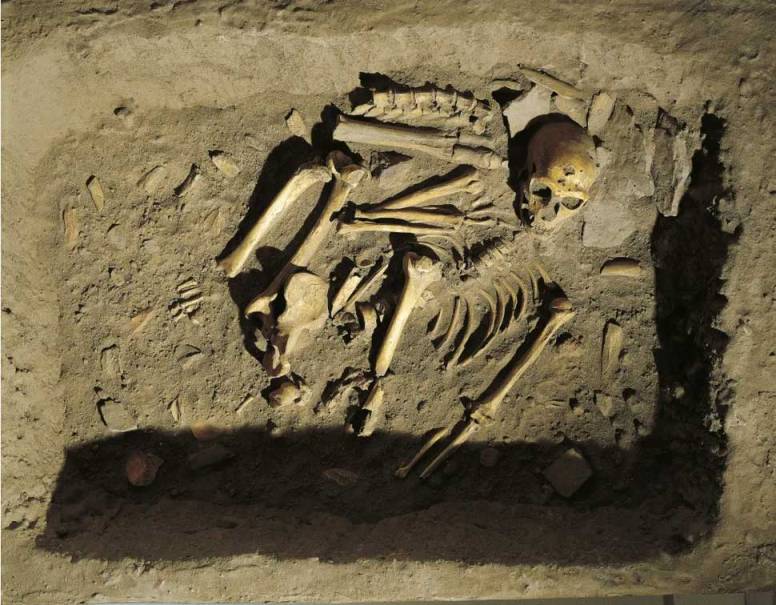
A reconstruction of a Neanderthal burial site discovered in the early 20th century in Chapelle-aux-Saints, France. The skeleton found there, with its deformed spine, inspired early depictions of Neanderthals as “fist-dragging brutes.” DEA/A. DAGLI ORTI/De Agostini Getty Images
“Neanderthals may have suffered from this — what they call mutation burden,” Hekkumen said. Genetic studies show that Neanderthals had many problematic mutations that likely affected their survival. “Because of the small population size, they weren’t really able to breed out these bad alleles, and their children could have been really sick at the end,” Hekkumen said.
Any animal population survives into the future by successfully reproducing and raising offspring. Researchers estimating the mortality rate of Neanderthal infants have found that even a 1.5% decrease in the survival rate of these children could lead to extinction of the population within 2,000 years, April Nowell, a paleolithic archaeologist at the University of Victoria in British Columbia, told Live Science.
“It doesn’t have to be something that’s too big for it to have a significant impact on the viability of your population,” Nowell said.
Thus, while Neanderthal numbers began to decline until they were reduced to small isolated groups without the social support needed to care for their increasingly sickly children, modern human groups quickly spread across Europe.
During two periods in Eurasia, 135,000 and 100,000 years ago, Neanderthal populations nearly died out. But they recovered, surviving cold snaps and the landscape changes they caused.
“Neanderthals survived all of these hardships,” Bailey said. “It was only when they were put under additional pressure by Homo sapiens that they eventually died out.”
Given the coincidence in time and space, researchers previously believed that modern humans played a direct role in the extinction of Neanderthals due to wars or new diseases.
There is some evidence of violence in Neanderthal skeletons. A young man from Saint-Cécaire, France, who is 36,000 years old, had a fractured skull caused by a sharp object, and an older man found in Shanidar Cave, Iraq, who is about 50,000 years old, had a partially healed puncture wound to his left rib. But it is impossible to say whether this violence was committed by modern humans or by other Neanderthals. Unless archaeologists find a site where Neanderthals were clearly the victims of a massacre by modern humans, it will be impossible to conclude that violence by modern humans was the primary cause of Neanderthal extinction.
There is also no genetic evidence that modern human diseases killed off Neanderthals, even though we share many immune-related genes. For example, we inherited Neanderthal genes that make us susceptible to autoimmune diseases like lupus and Crohn’s disease, as well as severe COVID-19. Future genetic analyses may reveal the potential role of diseases in the Neanderthal extinction, Gokcumen said.
But war and disease aren’t the only ways modern humans could have driven Neanderthals to extinction. When the two groups come together, competition can have tragic results.
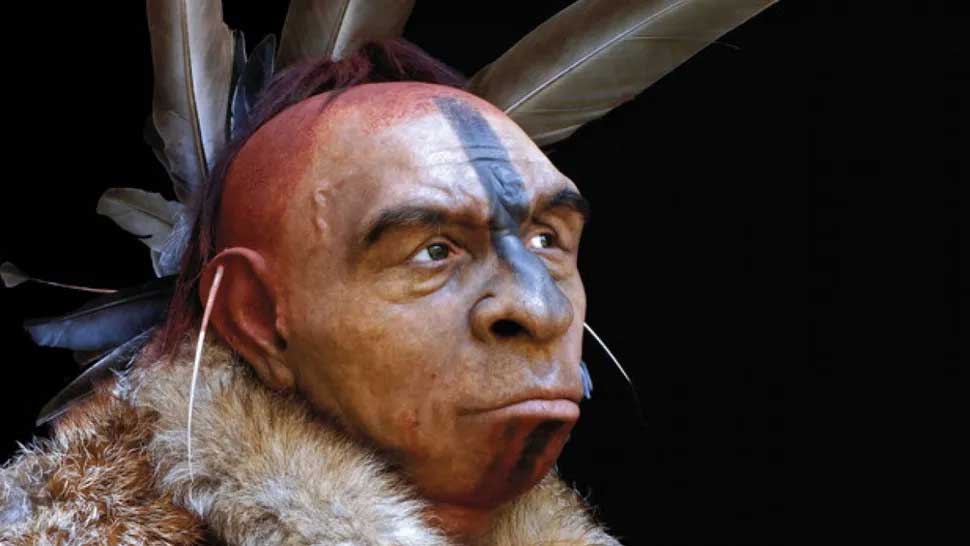
A reconstruction of a late Neanderthal from El Salt, southeastern Spain. Some of the last Neanderthals may have lived on the Iberian Peninsula. Our closest human relatives may have died out due to a combination of factors including isolation, inbreeding and competition from modern humans, new research suggests. Fabio Fogliazza
Neanderthal artifacts, such as pendants and engravings, show that Neanderthals were intelligent. But new research suggests that there are significant differences between the brains of H. sapiens and Neanderthals: Modern humans have more neurons in the areas of the brain responsible for higher-level thinking, and their neurons are more connected — meaning modern humans were likely more capable of thinking quickly. Combined with Neanderthals’ greater sophistication in processing language, this could mean modern humans had an advantage in key tasks like hunting and foraging, Nowell said.
And while extremely isolated groups of Neanderthals may have had biological disadvantages, they probably also had cultural disadvantages.
“Ideas spread more easily when you have a large population and other people can build on them,” Bailey said. But given the fragmented nature of Neanderthal populations, “their artistic or cultural types of innovations may not have evolved in the same way that we see in much larger populations that interact a lot with people,” she said.
Although Neanderthals created tools that were highly sophisticated for their time, we have not found any definitive long-range weapons created by Neanderthals. The ability of modern humans to invent projectile weapons, on the contrary, may have given us a survival advantage.
However, the full implications of these differences for Neanderthal survival are still unknown.
“We could also think about intergroup competition or competition between groups of Neanderthals,” Nowell suggested, as a possible result of their declining numbers and the encroachment of modern humans.
Looking at modern and historical hunter-gatherer groups, Nowell and co-author Melanie Chang, a paleoanthropologist at Portland State University, noticed that these groups often tightly regulated who could use the land and its resources, and that being part of the “in-group” could be a matter of survival. As Neanderthals began to disappear from much of Eurasia and retreat to southern Iberia, competition between Neanderthal groups would have increased.
“It may be competition with other Neanderthals that prompts them to start standing out more,” Nowell said.
This seems especially compelling given that about 40,000 to 50,000 years ago, there was a cultural explosion among both modern humans and Neanderthal groups. These cultural elements included a surge in personal adornment, such as painted shells, likely worn as pendants, that could have served as “group” symbols, Nowell said.
With mounting evidence that Neanderthals and modern humans interacted regularly for thousands of years, many researchers are looking to an unusual place to find answers to the question of what happened to the Neanderthals: a theory first put forward by paleoanthropologist Fred Smith and his colleagues 35 years ago.
“He proposed that there was gene flow and a slow assimilation of Neanderthals into human populations,” Higham said.
Essentially, these two groups just got used to hanging out with each other, and as more people moved into Eurasia, their larger population eventually swamped the Neanderthals, whose lineage died out. This idea is supported by research that found that H. sapiens simply absorbed the Neanderthals into our population. So we may have made the Neanderthals disappear as a distinct group, making some of the rest part of our family.
They shared genes, but archaeological evidence does not show that Neanderthals and modern humans shared homes or had the close social ties necessary to say that Homo sapiens assimilated Neanderthals into their own population.
“Until we find a frozen Neanderthal and a modern human locked in an embrace, it’s always going to be open to interpretation,” Bailey said.
Even if we find such a place, it is unlikely to change the subtle and complex picture of the last moments of Neanderthals’ lives.
It is not known when the last Neanderthal died, but many archaeologists believe that some of its last branches lived in southern Iberia.
Neanderthals once roamed Eurasia, but disappeared around the time Homo sapiens reached Europe. One big question has stumped archaeologists for decades: Who were the last Neanderthals, and where did they live?
We don’t know for sure, but most evidence points to the Iberian Peninsula, which covers what is now Spain and Portugal.
Many archaeologists believe that the last Neanderthals lived in southern Iberia, as sites in this region look somewhat different from those in other parts of Europe.
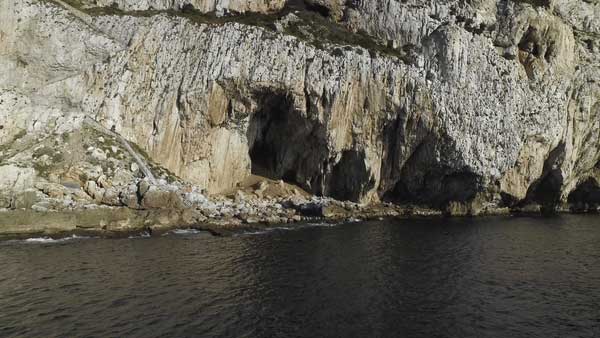
Gorham’s Cave in Gibraltar may have been home to some of the last Neanderthals on the Iberian Peninsula, although the dating of Neanderthal artefacts from the cave is controversial. BBC Universal/Getty Images
Neanderthals created certain types of tools called Mousterian, after a Neanderthal site in France. These tools were invented 160,000 years ago and largely disappeared from much of Europe by 40,000 years ago, presumably along with their Neanderthal creators.
But archaeologists have found Mousterian tools at southern Iberian Neanderthal sites that were made after that time. These items may be evidence that Neanderthals clung to the region, perhaps to escape the climate changes affecting other parts of Europe.
However, to prove that Neanderthals lived where such tools are found, archaeologists ideally need undisturbed, uncontaminated layers in which they will find materials clearly associated with Neanderthal activity, such as bones with cut marks, bone tools, and charcoal that was intentionally burned.
This is where things get complicated, especially because many Neanderthal sites were excavated or dated before people learned to avoid contaminating ancient samples.
For years, Gibraltar, a British territory at the southern tip of the Iberian Peninsula, was thought to be the last stronghold of Neanderthals. The British Navy first identified a Neanderthal skull in Forbes Quarry Cave in 1848, and excavations at Gorham’s Cave began in the early 1990s. In the cave, archaeologists have found dozens of Mousterian artefacts and a charcoal hearth.
In a groundbreaking paper published in the journal Nature in 2006, zoologist Clive Finlayson and his colleagues used radiocarbon dating on three samples from the hearths. They found dates between 28,000 and 22,000 years ago – thousands of years after Neanderthals were thought to have gone extinct.
These “last Neanderthals,” Finlayson and his colleagues wrote in their paper, had access to a wide variety of plants and animals in this small area. “Such ecological diversity may have contributed to their long-term survival,” the researchers write.
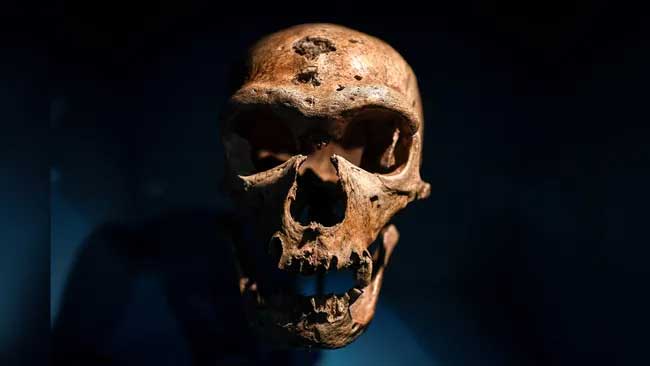
A Neanderthal skull on display at the Museum of Man in Paris on March 26, 2018. STEPHANE DE SAKUTIN/AFP Getty Images
However, later research has cast doubt on these dates.
In a 2014 study published in the journal Nature, archaeologist Tom Higham and colleagues used the latest radiocarbon dating and statistical modeling techniques to show that many of the previously published dates, such as the very late date for Gorham’s Cave in Gibraltar, were wrong.
After re-analyzing the dates of 40 sites, Higham and his colleagues concluded that Neanderthals did not survive beyond the period of about 39,000–37,000 years ago.
“There are a few places that are around 40,000 cal BP (38,000 years ago) or so, but none of them stand out like Gibraltar, which was once the last stronghold,” Higham told Live Science.
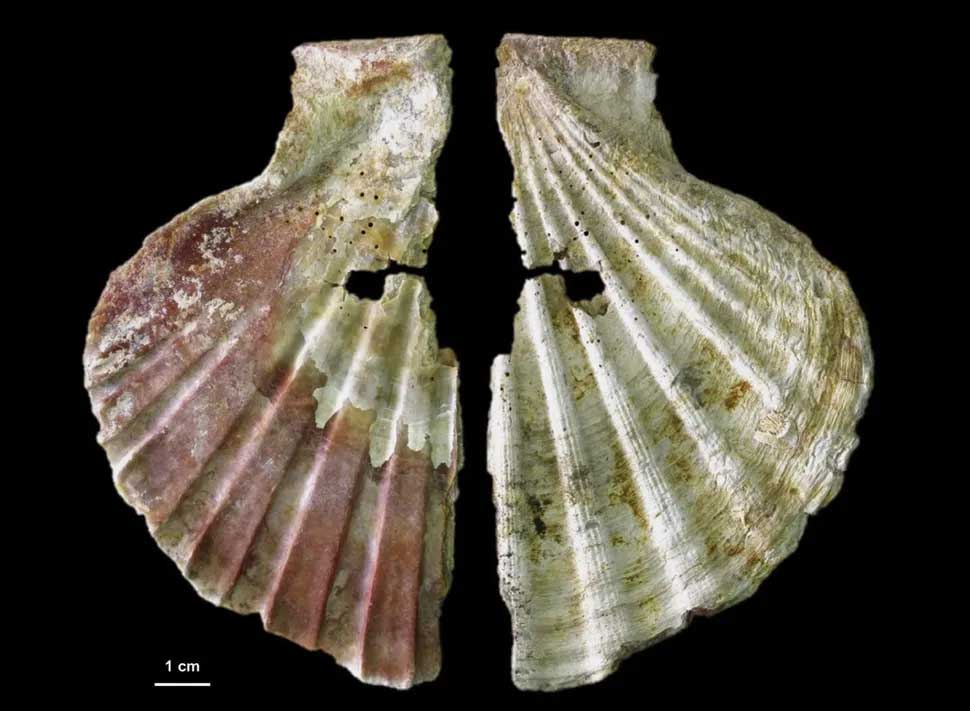
Cueva Antón in southeastern Spain, which dates back to around 36,600 years ago, may also be one of the last sites of Neanderthals. It features a shell that was likely decorated by Neanderthals. João Zilhão
One candidate for the Neanderthal final resting place is the Cueva Antón cave in southeastern Spain, excavated by archaeologist João Zilhán. In a 2021 study in the journal Quaternary Science Reviews, Zilhán presented results that date charcoal at the site to 36,600 years ago.
“Cueva Anton is an interesting potential site,” Higham said. The problem is that there are relatively few stone tools there, making the dating evidence a little uncertain, he added.
Rather than talking about “last” Neanderthals, “there was a mosaic of different groups across Europe and probably Eurasia,” Higham said. “I believe that Neanderthals were assimilated into modern human groups rather than going extinct in some isolated way.”
The DNA of “Thorin,” one of the last Neanderthals, has finally been sequenced, revealing inbreeding and 50,000 years of genetic isolation. Thorin, named after the dwarf in J.R.R. Tolkien’s The Hobbit, is also called the “last Neanderthal” because he may have lived as little as 42,000 years ago.
“Thorin,” one of the last Neanderthals to walk the planet, was a member of a previously unknown lineage that had been isolated for 50,000 years, a new analysis of his DNA has revealed.
In a study published September 11, 2024, in the journal Cell Genomics, a team of researchers led by Ludovic Slimac of the Centre for Anthropobiology and Genomics in Toulouse, France, detailed their discovery that Thorin descended from Neanderthals who were isolated for thousands of years despite other groups living nearby.
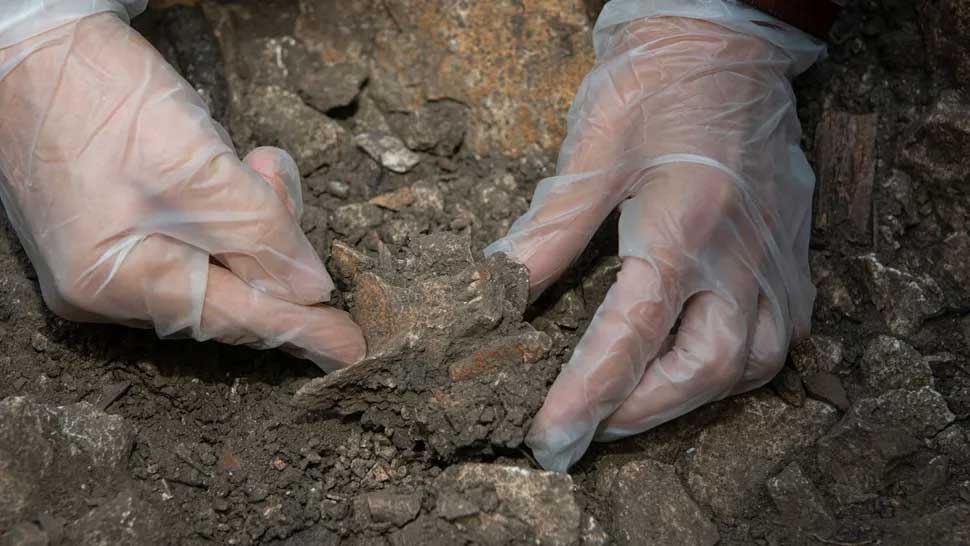
DNA analysis has shown that Thorin’s bloodline has been genetically isolated for about 50,000 years. Ludovic Slimac
Slimak, who originally found Thorin’s remains, theorized two decades ago that Neanderthals in the Rhone Valley were different from those in neighboring regions, based on differences he noticed in stone tools at Grotte Mandren. He suggested that Thorin and his relatives had not adopted a new style of toolmaking seen at other modern sites.
“It turns out that what I hypothesized 20 years ago was predictive,” Slimak told Live Science in an email. “The Thorin population went 50,000 years without exchanging a single gene with classic Neanderthal populations.”
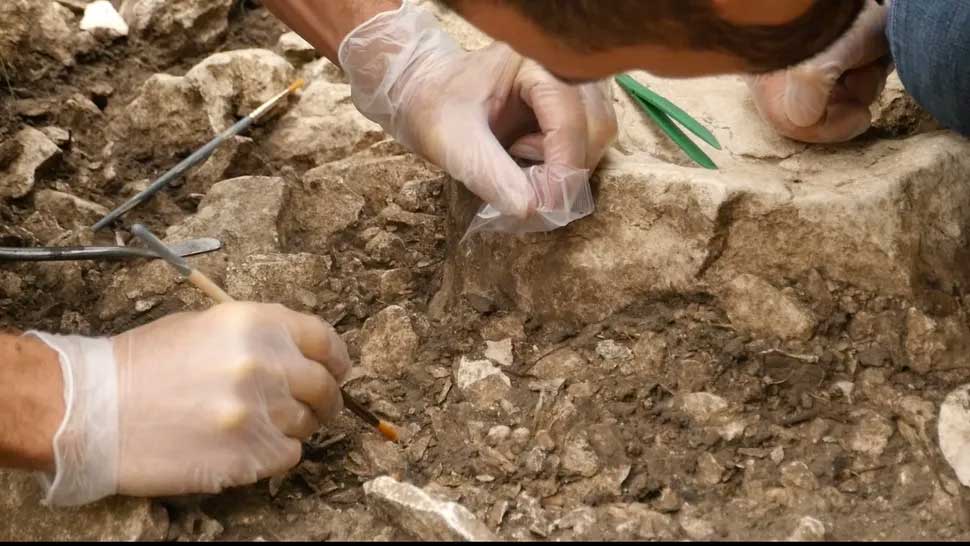
Gloved hands picking bits of bone out of the mud. Ludovic Slimac
Slimak and colleagues used a portion of the root of one of Thorin’s molars to determine that he was male and to sequence his entire genome. Compared to previously published genomes of late European Neanderthals, Thorin showed high genetic homozygosity — identical gene variants often indicating recent inbreeding — and no evidence of interbreeding with modern humans.
“Our results indicate small group sizes and long-term genetic isolation of the Torin population from other late Neanderthal populations for which genetic data are available,” the researchers write in their study.
The isolation of this group of Neanderthals raises questions about when and why the species went extinct.
Using a variety of methods, including radiocarbon dating and assessing the geological layers in the cave, the research team found that Thorin died between 52,000 and 42,000 years ago. However, according to the study, evidence recently discovered in 2023 suggests that Thorin is more likely 42,000 years old, and therefore one of the last Neanderthals.
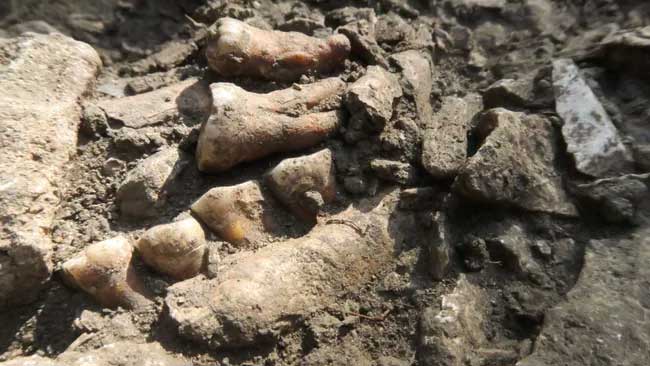
Researchers used a portion of the root of one of Thorin’s molars to determine that he was male and to create a whole genome sequence that showed he was part of an isolated, previously unknown lineage of Neanderthals. Ludovic Slimac
“Everything needs to be rewritten about the great extinction of humanity and our understanding of this incredible process that will lead to Homo sapiens being the only surviving species of humanity,” Slimak said. “How can we imagine populations that lived in isolation for 50,000 years, only two weeks’ walk away from each other? The whole process needs to be rethought.”
Although it is generally accepted that humans were responsible for the extinction of Neanderthals, the genetic and cultural isolation observed at the Grotte Mandrin rock shelter “raises new questions for further study of their social and ethological organization, which may have played an important role in their subsequent extinction,” the researchers concluded.
A new ecological model suggests that Neanderthals and modern humans interbred in the Zagros Mountains of modern-day Iran before diverging 80,000 years ago.
Modern humans and Neanderthals clearly interbred, genetic evidence shows, but exactly where and when remains unclear. Now a new study pinpoints where one wave of these encounters occurred — the Zagros Mountains in what is now mostly Iran.
Neanderthals emerged around 400,000 years ago and lived in Europe and Asia, while the ancestors of modern humans emerged in Africa around 300,000 years ago and spread throughout the world. Genetic evidence suggests that Neanderthals and Homo sapiens merged several times, likely around 250,000 to 200,000 years ago, then between 120,000 and 100,000 years ago, and finally around 50,000 years ago — before Neanderthals disappeared as a distinct population.
Given the distribution of archaeological sites with Neanderthal or early H. sapiens artifacts, the most likely meeting place for these groups was the Middle East. But there is a distinct lack of ancient human and Neanderthal bones in this area, meaning that it is currently impossible to determine interbreeding from “hybrid” skulls or DNA.

A new study suggests that Homo sapiens and Neanderthals met and may have interbred in the Zagros Mountains between 120,000 and 80,000 years ago. Paul Biris, Getty Images
To fill this information gap, the research team created an ecological model combined with geographic data indicating Neanderthal and human archaeological sites to reconstruct the most likely locations where Neanderthals and modern humans intersected during the second wave of interbreeding.
They found that modern humans and Neanderthals met — and possibly interbred — in the Zagros Mountains between 120,000 and 80,000 years ago. The team published their findings on September 3, 2024, in the journal Scientific Reports.
The Zagros Mountains stretch for 990 miles (1,600 kilometers) and are located mostly in Iran. They are part of the Persian plateau, which was recently discovered to have been a “hub” for Homo sapiens about 70,000 years ago. But the area also had several ecosystems that could have supported both groups, the study found.
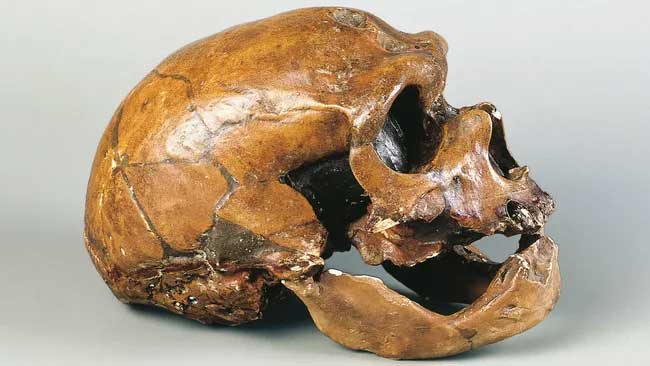
Neanderthals (pictured) and modern humans met — and may have interbred — in the Zagros Mountains between 120,000 and 80,000 years ago. DEA/G.CIGOLINI/Contributor, Getty Images
One of the most significant Neanderthal sites ever discovered, Shanidar Cave, is located in the Zagros Mountains. Ten skeletons have been found in the cave so far; several show signs of trauma, while others provide compelling evidence that Neanderthals buried their dead. However, much of the Zagros region has not been explored.
“The archaeological data in this area is very poor. We have plans to obtain more solid evidence, ideally by “recovering physical human remains from archaeological sites. Stone tools and better chronology are also of great help,” the study says.
The researchers’ ecological model, which takes into account environmental variables such as temperature and precipitation, complements archaeological and genetic evidence about when and where Neanderthals and early humans mated.
This type of model could help archaeologists further narrow down the best sites to excavate in the future, the researchers suggested in their study. “We encourage Iranian archaeologists to conduct field excavations in this potential interbreeding zone,” they wrote, and “we look forward to many exciting discoveries that will shed light on human evolution and dispersal.”
Circumstantial evidence suggests that Neanderthals who lived in cold regions almost certainly dressed head to toe in leather and fur. However, archaeologists have never found Neanderthal clothing or its remains.
Neanderthals lived as far north as Siberia. Their broad chests, noses, shoulders and pelvises, as well as short limbs, allowed them to conserve body heat in the cold climates where they lived.
While there is evidence of ancient clothing among later, anatomically modern humans, such as the leather suit worn by 5,000-year-old Ötzi the Iceman, no one has found similar evidence at Neanderthal sites.
But there is circumstantial evidence: A stone scraper from Neumark-Nord in Germany contained a small amount of residue that was likely stuck during the processing of skins 200,000 years ago. The residue contained acid from oak bark, which can be used to tan or preserve animal skins. However, it is unclear whether the residue was from the manufacture of clothing or fur blankets. Stone and bone awls (sharp tools) from a late Neanderthal site in central France also indicate that these ancient people made tools specifically for fastening skins together to create clothing or shelter.
The genetics of head and body lice suggest that Neanderthals and Homo sapiens diverged sometime between 170,000 and 72,000 years ago, and that one species of body lice was reintroduced into H. sapiens from another ancient human population, possibly Neanderthals, 100,000 years ago. Since body lice live on clothing, this suggests that our ancestors began wearing clothing sometime before that.
The front teeth of almost all Neanderthals are much more worn than the back teeth, indicating that they used their mouths to hold and manipulate objects, not just to eat. This tooth wear in Neanderthals is similar to that of modern Inuits, who use their teeth to soften animal skins to make clothing.
The oldest direct evidence of Neanderthal fiber technology is a fragment of three-ply cord attached to a stone tool from a site in southeastern France that dates back 41,000 to 52,000 years. While cords and ropes can be used to make nets, baskets, and traps, they can also be made into shoes and fabric.
One area of research that hasn’t been explored is evidence of frostbite in Neanderthals, says Sarah Lacy, a biological anthropologist at the University of Delaware. Frostbite could be a problem even for modern humans living in the Arctic.
Since there is no evidence of frostbite on Neanderthal skeletons, this supports the idea that they wore hand and foot protection.
While most researchers agree that Neanderthals wore clothing, what kind of clothing they wore remains controversial. In the past, scientists believed that Neanderthals wore simple loincloths or loose cloaks. But given the intelligence of Neanderthals, Lacy believes they have not been given enough credit.
Looking at modern Inuit clothing — which includes a simple parka, pants and boots — Lacy suspects that Neanderthal men and women likely wore similar outfits, with women’s clothing perhaps a little looser to accommodate pregnancy. Neanderthal babies may have been swaddled in furs when not in the care of a caregiver.





